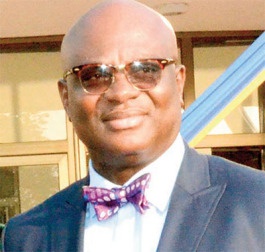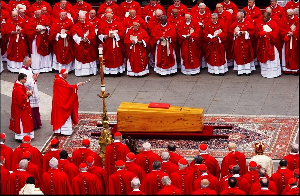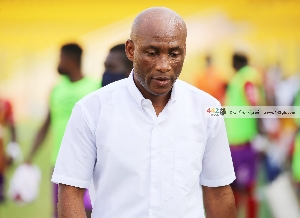Kojo Bonsu
The boast of heraldry, the pomp of power,
And all that beauty, all that wealth e’er gave,
Awaits alike th’inevitable hour.
The paths of glory lead but to the grave.”
Thomas Grey; “Elegy Written in a Country Churchyard.
Koko Bonsu, or rather Kwadwo Bonsu, would have been my mother’s name(Adwoa Bonsu) if she had been born a man. Being an Asante, my mother’s first name would have been scripted as Kwadwo NOT Kojo, just as my former room-mate, Kwadwo Baah-Wiredu spells his.
Bonsu is the Akan name for a whale. But that is where the similarity between my mother and the 25th Mayor, or Metropolitan Chief Executive of Kumasi ends. For, the dissimilarities between the two are very wide. Where my mother was simple, Kojo was complex; where she was an introvert, he was an extrovert; where she was unassuming, he was brash; where she was shy, he was boastful; where she was poor, he was rich; where she was Lilliputian (dwarf-sized), he was Brobdingnagian (giant-sized).
I have spoken to a few chiefs in Ashanti (rather, few chiefs, because I do not know many of them) and not a single one had any ‘nice’ word to say about Kojo. The chiefs sang a common refrain: Kojo was boastful and disrespectful! Period.
On assuming office as the Metropolitan Chief of the Kumasi Metropolis, Kojo caused many elegant, gargantuan-sized billboards to be made, welcoming visitors to the city, which belongs to King Osei Tutu. His administrative style left much to be desired.
He preferred working alone, to the neglect of the various committees that were available; a serious gaffe he made was to complete a contract before pushing the document to the Legal Branch – only for the lawyers to sign! There were far too many administrative blunders he committed and which could plunge the metropolis into wading through the courts with huge public debts—judgment debts. Remember the stalemate with Frico, or that wasn’t the name?
Kumasi is the capital city of Ashanti where the Asante King, the Asante Queen and the Golden Stool reside. Asantes believe in tradition and custom. They have respect for their chiefs. All lands in Ashanti belong to Otumfuo, the Asantehene, and all the subordinate chiefs know for whom they hold their lands in trust. One cannot do a project in Kumasi without getting a nod from Manhyia.
So that, the Kejetia Project which was started before Kojo assumed office had to have Otumfuo’s blessing even as the project was on-going. Manhyia appointed Amoamanhene, Nana Boateng, to represent Asanteman on the project. Nana Boateng was not selected out of fancy. In his few years of reign as Amoamanhene, Nana Boateng has developed the township of Amoaman to the delight of all and sundry: an ultra modern J.H.S., a community hall, a block for a police post … you name it. Kojo Bonsu snubbed Nananom when he refused to recognize Amoamanhene as Otumfuo’s representative on the Kumasi Market Project.
Kojo Bonsu had dug his own grave, having stepped on so many toes. Before the government could react, Kojo had tendered his resignation. The Asanteman Council had called on the government to replace him over acts of insubordination and a show of disrespect to Asanteman and the Council. Was he trying to avoid the ignominy that would go with a dismissal?
But before he tendered his resignation, Kojo had launched a 55-page book highlighting his achievements since becoming the Chief Executive of KMA. Characteristic of his style of administration, the book “Changing Lives, Transforming Kumasi”, the book speaks of impressive infrastructure that includes the Rattray Park, the Central Market Redevelopment Project, and the KNUST footbridge. His resignation did not say anything about the decision of the Kumasi Traditional Council, the first time Asanteman had considered an official a persona- non-grata.
Kumasi taxpayers, including kaya-yei (the head porter) who is harassed each morning to part with fifty pesewas; the distraught office worker who has to pay GH¢1.00 per hour to park his car in the street; the market woman who has to pay 50 pesewas to attend to nature’s call – are all asking for accountability. The records should be available to tell the costs of various projects. How much did it cost KMA to construct the Rattray Park (was it the Assembly – approved budget of some US$40m or US$170m as is being peddled).
Kojo Bonsu’s predecessor was Samuel Sarpong. This man, Sammy, whom I lodged with in a hotel and chatted with in Johannesburg, South Africa, was so successful in the discharge of his duties that he was ‘promoted’ into a Regional Minister. What contributed to the success of Samuel Sarpong’s administration was his humility- not so, Kojo Bonsu-
‘Sekan-tia gye ne ho wo abofra nsam’ (A knife wriggles itself from the hands of a child). My father used to say: ‘Kumase-man, obiara ntumi nkukuru nsoa’ (No one can carry Kumasi on his head)
As the events unfolded, Kojo Bonsu was summoned more than ten times to appear before the Asanteman Council. He refused to heed the invitations and at the last count, Mr. John Alexander Ackon, the Ashanti Regional Minister appeared to seek permission for Kojo Bonsu with the excuse that Kojo was unwell—a Minister being sent on an errand by a Metropolitan Chief Executive.
Nana Acheamfour Kwame Akowuah II Asafohene and Otumfuo’s Akwamuhene and the entire Council were irate. They poured their venom on John Alexander Ackon. This was followed by the slaughtering of a ram to signify the severance of Asanteman’s relations with Mr. Kojo Bonsu. A ram sacrificed at Bogyawe! That was the point of no return. There is an Asante proverb which says: Opanin nte ntasuo nto fam na w’asan atafere (An elder does not lick his own spitum). Nana Yaw Owusu, Otumfuo’s Mpaboa-hene as well as the Amakom-hene Nana Adu Mensah have all spoken.
Rumours are rife that following the slaughtering of the sheep, many high-powered delegations have held private meetings with Otumfuo, all pleading with Otumfuo. Otumfuo as King of Asante would definitely have a large heart, but given the circumstances, no one could fault him for not acceding to the appeal by the peace-seeking emissaries. The Rubicon had been crossed, and there was no turning back.
In the resignation letter, Kojo Bonsu, had stated: “I have conveyed my resignation as the Metropolitan Chief Executive of the Kumasi Metropolitan Assembly to the President of the Republic, His Excellency John Dramani Mahama.…” He thanked the President for giving him the opportunity to serve the country. He was grateful to the Asantehene Otumfuo Osei Tutu and the Kumasi Traditional Council as well as the staff of the Assembly for their support during his three-and-a-half year stint at the Assembly.
In the fifties, I had a friend at the Army Children’s School at Kumasi. He was called Samuel Osei with his parents hailing from Bongo-Soe, in the Upper East Region. He was named after his parents’ landlord. With time, the name would stick, but his ancestry would be lost, especially when he married an Asante woman, and had children of his own.
In Asante, it is taboo to ‘reveal’ someone else’s ancestry- unless the person sought to be a chief. Kojo Bonsu was a lovely person, liked by one and all for his height and looks.
He was touted as Ohemaa-ba. I will miss him for the reception he gracefully organized for the lawyers during the last Conference of the Ghana Bar Association: ‘the salsa’ dancers were marvelous in their intricate syncopations. Perhaps that is all I will miss. My Latin friends or my friends who did Latin will say: “Finis coronat opus” (The end crowns the work)
Writer's e-mail: africanusoa@gmail.com
Opinions of Thursday, 14 July 2016
Columnist: Africanus Owusu-Ansah
Exeunt Kojo; Not as glamorously as the introit
 kojo Bonsu
kojo Bonsu
Opinions













